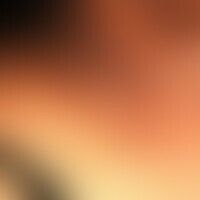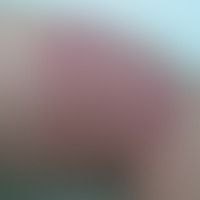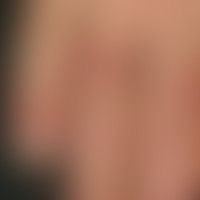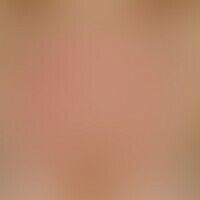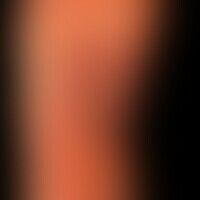Image diagnoses for "Plaque (raised surface > 1cm)"
570 results with 2866 images
Results forPlaque (raised surface > 1cm)
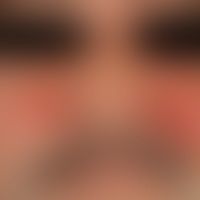
Erysipelas A46
Erysipelas acute: acutely occurring, for 4 days, increasing, smooth, planar, sharply defined, pillow-like raised, flaming red swelling of the cheeks and the left eye in a 56-year-old man; marked impairment of the general condition with sensation of heat in the cheeks.
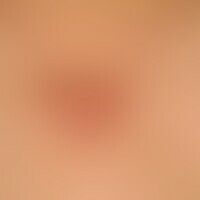
Keloid (overview) L91.0
Keloid, up to 6.5 cm in width and 3.5 cm in height, scar keloid in a 55-year-old man, which appears clearly rough and erythematous and is accompanied by itching.
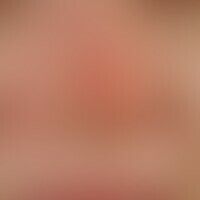
Psoriasis vulgaris L40.00
Psoriasis vulgaris: Erythematous, scaly plaque on the tip of the nose of a 34-year-old woman, which appeared for the first time about 1.5 years ago and measured about 1.5 cm.
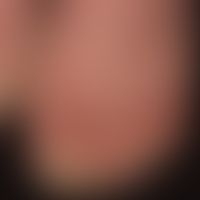
Keratosis palmoplantaris diffusa with mutation in keratin 1 Q82.8
Keratosis extremitatum hereditaria transgrediens et progrediens. transgredients (beyond the lateral edge of the foot) blurred palmoplantar keratosis.

Psoriasis palmaris et plantaris (overview) L40.3
Psoriasis palmaris et plantaris: dry keratotic plaque type. Psoriasis palmaris that has not been pretreated. 38-year-old man shows in the area of the right palm a rough, hyperkeratotic plaque with rhagades that has been permanent for years and is sharply defined.

Atopic dermatitis in children and adolescents L20.8
Eczema atopic in child/adolescent: 12-year-old child; acute episode of the previously known atopic eczema with vesicular, occasionally also pustular plaques.
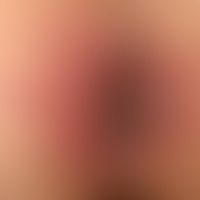
Condylomata lata A51.3
Condylomata lata. close-up. aggregated papules at the left border of the two-dimensional lesion well recognizable.
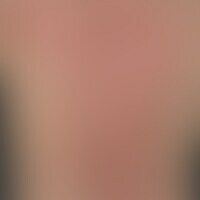
Lupus erythematosus (overview) L93.-
Rowell's Syndrome: Erythema exudativum multiforme-like exanthema in "subacute cutaneous lupus erythematosus
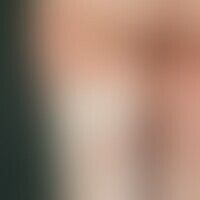
Circumscribed scleroderma L94.0
Scleroderma, circumscribed (plaque-type). Large circumscribed scleroderma with flat, little indurated erythematous plaques and bizarrely configured, infiltrated, atrophic (surface like cigarette paper) porcelain white plaques. In these areas the varices are clearly prominent.
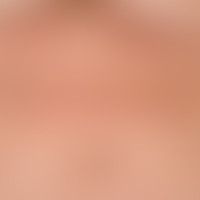
Dyskeratosis follicularis Q82.8
dyskeratosis follicularis. presentation of multiple, chronically stationary, disseminated, red nbis rfot-brown papules localized in the submammary and upper abdomen. in these areas strong increase of skin changes, especially in summer with increased sweating.

Pemphigus chronicus benignus familiaris Q82.8
Pemphigus chronicus benignus familiaris: chronic, sharply defined, red, rough plaque with multiple, spontaneous and, when stretched, gaping, streaky erosions (accordion phenomenon)
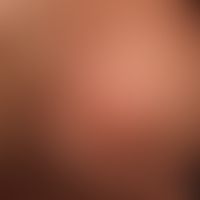
Tinea capitis profunda B35.02
Tinea capitis superficialis: easily inflammable, blurred, alopecic focus in the occipital region in a 7-year-old boy. low crust formation. no itching. no pain. fungal culture: Trichophyton mentagrophytes.
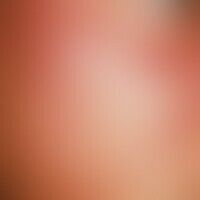
Drug effect adverse drug reactions (overview) L27.0
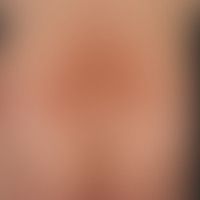
Lyme borreliosis A69.2
Lyme borreliosis, late stage: symptomless, blurred, morphea-like, painless plaques existing for several months (?). borrelia titer with highly specific bands positive. histo: diffuse, plasma cell-rich superficial and deep dermatitis. PCR: detection of borrelia antigens.
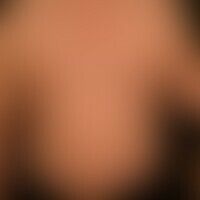
Granuloma anulare disseminatum L92.0
Granuloma anulare disseminatum: non-painful, non-itching, disseminated, large-area plaques that appeared on the trunk and extremities of a 52-year-old patient. No diabetes mellitus. No other systemic diseases known.

Acuminate condyloma A63.0
Condylomata acuminata: Multiple, partly solitary, partly aggregated, 0.2-0.7 cm large, flat, white plaques with a slightly verrucous surface.
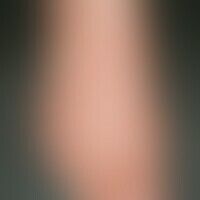
Contact dermatitis (overview) L25.9
Chronic allergic contact dermatitis: scattering contact allergic eczema in the area of the back of the foot with partly hemorrhagic blisters after application of an antimycotic.
